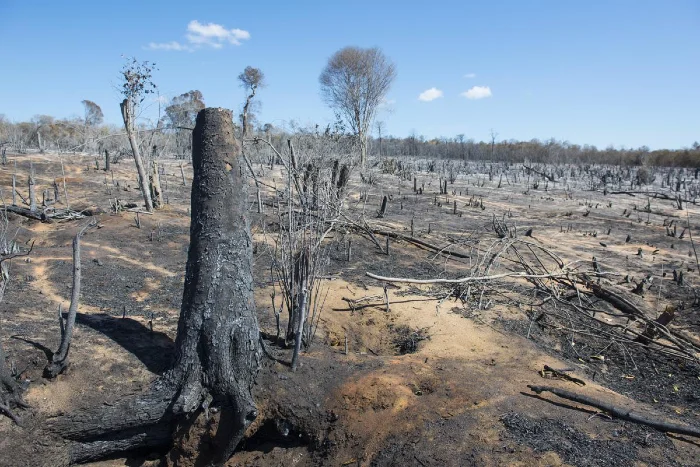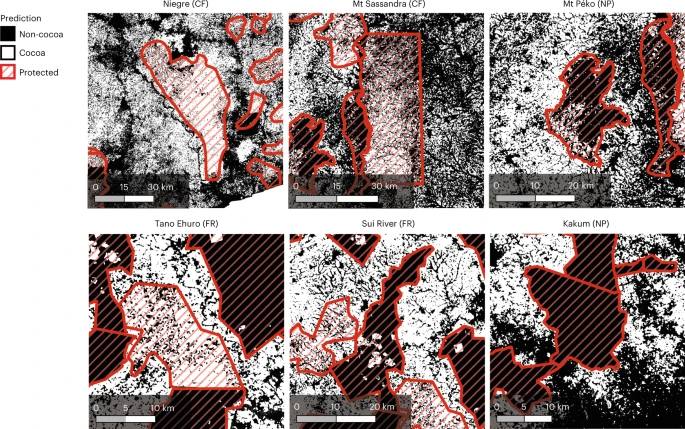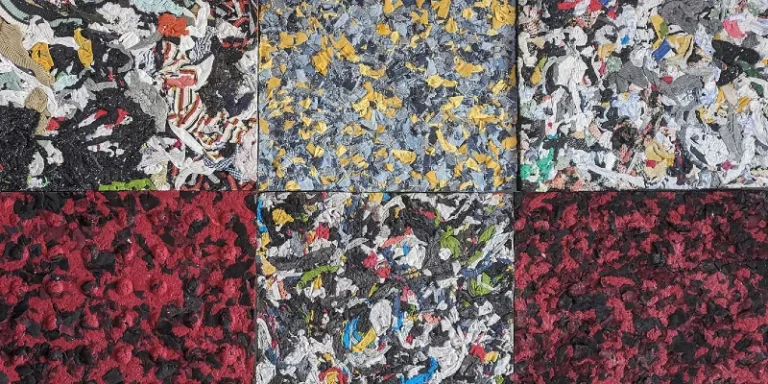Indulging in chocolate has become a cherished pleasure for many, especially during challenging times. As chocolate sales soar, it’s important to understand the hidden cost behind this delectable treat.
At the heart of every chocolate bar lies the key ingredient: cocoa beans. These beans are predominantly sourced from West Africa, with Côte d’Ivoire and Ghana being major producers.
However, the relentless demand for chocolate has come at a great environmental price, as the lush rainforests of West Africa are being cleared to make way for expansive cocoa farms.
In recent months, chocolate sales have surged as consumers seek solace in this simple and affordable pleasure amidst the cost-of-living crisis.
However, behind the allure of chocolate lies a bitter truth: the devastating impact of cocoa farming on Africa’s forests.
A recently published study has uncovered alarming findings, revealing the extensive deforestation caused by cocoa production in West Africa, particularly in countries like Côte d’Ivoire and Ghana, which collectively account for about 70% of the world’s cocoa supply.
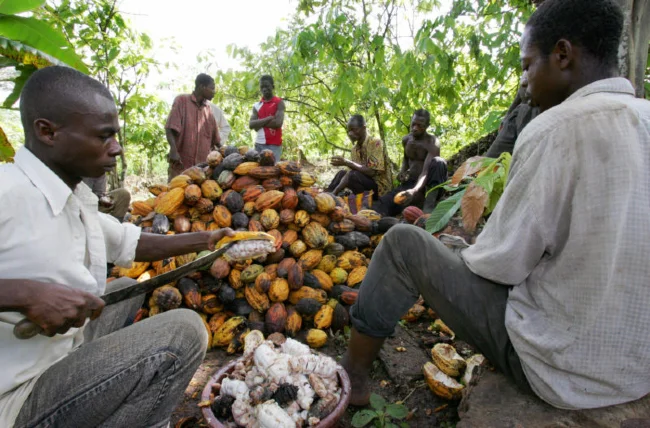
Understanding the Environmental Consequences
To comprehend the magnitude of the problem, researchers conducted an in-depth investigation, utilizing advanced techniques to create a high-resolution map of cocoa-growing areas in Ghana and Côte d’Ivoire.
The study, which draws on satellite imagery and information from over 100,000 cocoa farms, sheds new light on the true extent of cocoa production and its connection to forest loss.
These findings challenge previous assumptions and provide critical insights into the environmental impact of cocoa farming.
The results of this groundbreaking research were recently released, which provides new insights into this complex problem and unveils the true magnitude of cocoa production and its correlation with forest loss.
Shockingly, the findings indicate that cocoa farming may be responsible for up to 37% of deforestation in protected areas.
The Price Paid for Cocoa Farming
The lush Upper Guinean forests of West Africa have long been recognized as global biodiversity hotspots, boasting unparalleled concentrations of unique plant and animal species.
However, extensive deforestation has occurred in these regions, with Côte d’Ivoire losing up to 90% of its forest cover since 1950 and Ghana witnessing a 65% reduction.
The study reveals that cocoa farming, along with other agricultural activities, mining, and logging, has been a significant contributor to this alarming trend.
Unveiling the Extent of Cocoa Farming
The absence of accurate, high-resolution maps of cocoa-growing areas has hindered comprehensive understanding of the problem.
To overcome this, researchers employed artificial intelligence (AI) techniques, training a neural network to identify cocoa plantations in satellite images.
By cross-referencing this information with on-ground verification at 2,000 random locations, the study successfully generated the first detailed map of cocoa production in West Africa.
The Disturbing Reality Exposed
The results are staggering, revealing a vast expanse of land dedicated to cocoa farming, surpassing official figures by up to 40% in Ghana.
Across both countries, over 7 million hectares are devoted to cocoa plantations, a substantial portion of which was previously thriving native forest.
The figure below shows visually the horrific extent of the encroachment. The satellite images reveal that for certain protected areas, up to 80% of the surface is covered by cocoa plantations.
They also show a large difference in deforestation across protected area types that the regional governments continue to refuse to investigate.
The most deforested protected areas in Côte d’Ivoire are the classified forests of Niegre, Scio and Mt Sassandra, with 81.8%, 68.2% and 49.0% of their area under cocoa cultivation, respectively. All three of them have been exposed to illegal cocoa farming for decades.
Most concerning is the revelation that more than 1.5 million hectares of cocoa farms are situated in protected areas, exacerbating the issue of deforestation within these crucial habitats.
The study estimates that cocoa production is linked to over 37% of deforestation in protected areas in Côte d’Ivoire and 13% in Ghana.
A Path to Restoration: Overcoming the Challenges
Addressing this complex issue requires a multifaceted approach. Supporting the estimated two million small-scale cocoa farmers, many of whom live in poverty, is paramount.
Assisting them in managing their existing farms more sustainably can help alleviate pressure to expand into forested areas.
Additionally, stronger law enforcement is essential to safeguard protected areas from encroachment. Governments and companies must collaborate to implement measures that promote sustainable cocoa production.
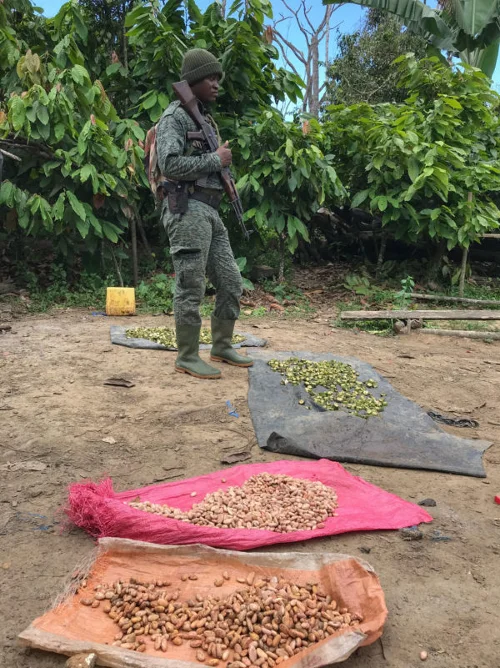
A Fairer Future: Empowering Farmers and Consumers
It is crucial that a fairer distribution of profits from chocolate sales reaches the farmers, empowering them to adopt sustainable practices and contribute to forest preservation. However, consumers also play a vital role.
Recognizing the true cost of chocolate production may require a willingness to pay a higher price for ethically and sustainably sourced products. By making informed choices and demanding transparency, consumers can drive positive change within the cocoa industry.
Preserving Africa's Forests
Only through collective action in all these areas can we hope to preserve the remaining forests of Côte d’Ivoire and Ghana, safeguarding their unparalleled biodiversity for future generations.
By taking a stand against deforestation and supporting sustainable cocoa farming practices, we can enjoy our beloved chocolate while contributing to a more environmentally conscious and socially responsible industry.
Let us unite in protecting the delicate balance between our indulgences and the preservation of our planet’s natural wonders.
8 Things You Can Do To Help
Every individual can make a difference!
Here are eight ways you can contribute to the preservation of Africa’s forests and support sustainable cocoa farming:
Choose ethically sourced chocolate: Look for certifications such as Fairtrade, Rainforest Alliance, or UTZ on chocolate packaging. These certifications ensure that the cocoa used in the product has been produced sustainably, with fair wages and environmental protection in mind. The next time you get a chocolate craving, look for the following ethically sourced logos:
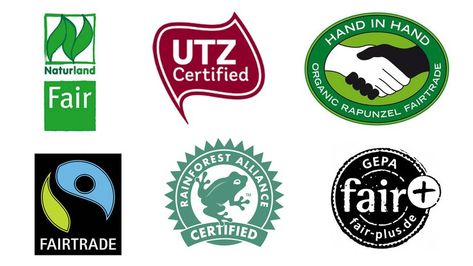
Support local and artisanal chocolate makers: Seek out local chocolatiers or brands that prioritize sustainability and transparency in their sourcing practices. These smaller-scale producers often have closer relationships with cocoa farmers and can provide more information about the origin and sustainability of their ingredients.
Opt for dark chocolate: Dark chocolate typically contains a higher percentage of cocoa and requires less sugar and milk additives. By choosing dark chocolate, you indirectly reduce the demand for cocoa and support a more sustainable industry.
Reduce overall chocolate consumption: Moderation is key. By reducing your overall chocolate consumption, you help alleviate some of the demand for cocoa and, consequently, the pressure on forests for expansion of cocoa plantations.
Educate yourself and spread awareness: Stay informed about the environmental and social issues associated with cocoa farming. Share your knowledge with friends and family to raise awareness about the need for sustainable practices and the importance of preserving forests.
Engage with companies and policymakers: Contact chocolate manufacturers and ask about their sourcing practices and commitments to sustainability. Encourage them to prioritize sustainable sourcing and transparent supply chains. You can also support policies that promote forest conservation and sustainable agriculture.
Explore alternative products: Consider trying chocolate substitutes made from alternative ingredients such as carob, coconut, or other plant-based options. While they may not be exactly the same as chocolate, they offer different flavors and textures while reducing your cocoa consumption.
More To Discover
- Earth’s Northern Crown At Risk: Our Largest Continuous Expanse of Wilderness Is Shrinking
- Alarmingly High Deforestation for Rubber Plantations Surpasses Previous Estimates
- How Chinese Gold Mining is Ravaging Cambodia’s Endangered Wildlife Sanctuary And No One Will Stop Them
- Amazon’s Green Hope Reduced to Ash: Arson Devastates Three-Year Reforestation Endeavor
Support organizations working for sustainable cocoa: Contribute to non-profit organizations and initiatives dedicated to promoting sustainable cocoa farming, forest conservation, and supporting the livelihoods of cocoa farmers. These organizations often work directly with communities to implement sustainable practices and provide resources for farmers.
Remember, every small action makes a difference. By making conscious choices as consumers, we can collectively contribute to a more sustainable chocolate industry and help protect Africa’s precious forests.








